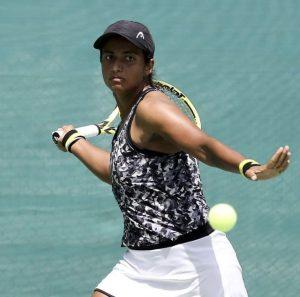We may earn money or products from the companies mentioned in this post.
Introduction

Tennis is a sport that demands exceptional physicality and stamina from its players With the intense nature of the game, injuries and physical ailments are inevitable To address these issues, tennis has implemented a system known as medical timeouts These timeouts allow players to receive necessary medical attention during a match, ensuring their well-being and fair competition
Definition of a medical timeout in tennis
In tennis, a medical timeout refers to a break in play taken by a player who requires immediate medical assessment or treatment for an injury or illness The player can request this timeout at any point during the match when they feel unable to continue without medical intervention
Purpose and significance of medical timeouts
The purpose of medical timeouts in tennis is twofold: to provide players with necessary medical assistance and to ensure fair competition By allowing players to receive timely treatment for injuries or illnesses, the game can continue with both competitors on equal footing
Medical timeouts hold significant importance as they prioritize the health and well-being of the players above all else They enable athletes to address their physical conditions promptly, preventing further aggravation or potential long-term damage
Common reasons for taking a medical timeout
There are several common reasons why tennis players may take a medical timeout:
-
Injury:
Players often need attention for musculoskeletal injuries such as sprains, strains, or muscle tears caused by overexertion or sudden movements on court -
Illness:
Tennis matches can be physically demanding, making athletes susceptible to illnesses like heat exhaustion, dehydration, or respiratory infections -
Fatigue:
Extended matches can lead to physical and mental exhaustion, necessitating a medical timeout to regain energy and focus -
Pre-existing conditions:
Players with pre-existing medical conditions may require brief breaks during matches to manage their symptoms or receive necessary medication
It’s important to note that medical timeouts are subject to certain rules and regulations set by tennis governing bodies These rules ensure that the timeouts are used appropriately and don’t disrupt the flow of the game unnecessarily
Rules and Regulations Governing Medical Timeouts in Tennis

Tennis is a physically demanding sport that requires players to be at their best both mentally and physically However, injuries and medical issues can sometimes arise during a match, necessitating the need for a medical timeout In order to ensure fair play and maintain the integrity of the game, there are specific rules and regulations that govern these timeouts
Maximum Duration of a Medical Timeout
When it comes to the maximum duration of a medical timeout in tennis, there are some guidelines that players must adhere to The accumulative time allowed for multiple issues is an important factor to consider This means that if a player has multiple injuries or conditions requiring attention, they cannot exceed the total allocated time for all those issues combined
In addition, specific injuries or conditions may warrant additional time considerations For example, more serious injuries such as sprained ankles or muscle tears may require more time for treatment compared to minor ailments like blisters or cramps
Number of Authorized Medical Timeouts per Match
The number of authorized medical timeouts per match varies depending on whether it’s a singles or doubles match In singles matches, each player is entitled to receive one medical timeout during the course of the match On the other hand, in doubles matches where two players form a team, each team is allowed only one medical timeout collectively
If a player or team exceeds the limit on authorized medical timeouts, there can be consequences These consequences are put in place to prevent abuse of the system and ensure fair play Possible penalties may include warnings from officials, point deductions, or even disqualification from the match if deemed necessary by tournament regulations
By adhering to these rules and regulations governing medical timeouts in tennis, players can receive appropriate medical attention when needed, while still maintaining the fairness and integrity of the game
Controversial Use of Medical Timeouts by Professional Players

The use of medical timeouts in professional tennis has sparked controversy and raised questions about the integrity of the game There have been notable incidents where players have been accused of abusing the system for their own advantage
Impact on Player Reputation and Sportsmanship Debates
When players take medical timeouts that seem unnecessary or prolong them beyond what is reasonable, it can damage their reputation among fellow athletes and fans Accusations of gamesmanship arise, calling into question the player’s sportsmanship and fair play
In some cases, players may strategically use medical timeouts to disrupt their opponents’ momentum or gain additional rest This not only undermines the spirit of fair competition but also fuels debates about where to draw the line between legitimate injury concerns and strategic manipulation
Strategies to Prevent Misuse
To prevent the misuse of medical timeouts, various strategies can be implemented One approach is to introduce stricter guidelines for when a player can request a timeout This could include requiring a visible injury or consultation with an on-site physician before allowing a timeout
Additionally, implementing time limits for medical timeouts could help address excessive delays By imposing a maximum duration for these breaks, players would be discouraged from taking prolonged timeouts without valid reasons, ensuring that matches flow smoothly and maintain their competitive nature
The Role of Umpires, Tournament Officials, and Physicians

Responsibilities and Decision-Making Processes
The responsibility of regulating the use of medical timeouts falls on several stakeholders within the tennis ecosystem Umpires play a crucial role in overseeing matches and deciding whether to grant or deny a player’s request for a timeout based on established rules
Tournament officials are responsible for enforcing the rules and ensuring fair play throughout the tournament They must closely monitor medical timeouts to identify any potential abuse or violations of the regulations
Physicians also play a vital role in determining the legitimacy of an injury claim Their professional expertise helps evaluate whether a timeout is genuinely necessary for medical reasons or if it is being exploited for other purposes
Challenges Faced by These Stakeholders
The stakeholders involved in regulating medical timeouts face challenges in striking the right balance between player welfare and maintaining the integrity of the game Umpires and officials need to make quick judgments while considering potential gamesmanship, which can be a subjective task
Moreover, physicians often have limited time to assess players’ injuries during high-pressure matches This makes it challenging to accurately determine whether a timeout is genuinely needed or if it’s simply an attempt to gain an advantage
Despite these challenges, it is essential for all parties involved to work together and ensure that medical timeouts are used appropriately and within the boundaries set by the sport’s governing bodies
Useful Links

Novak Djokovic and his medical timeouts
ATP To Make Changes To Toilet Break And Medical Time- …
Rune Dismisses Gamesmanship Allegations After ‘Tactical …
D1 medical timeout rules
Myth-Busting the Medical Time-Out – Fog Mountain Tennis
The new toilet break and medical timeout rules from the ATP
Outrage, Controversy and the Use & Abuse of Medical …
It’s Time To Change The Medical Timeout Rules In Tennis
Addressing Time Violation and Medical Timeout Rules
ITA Announces Rules Additions, Changes, and …
How Long Is A Tennis Medical Timeout
What Happens if a Tennis Player Gets Injured in a Game
Ruud on medical timeouts, after defeat to Rune – Tennis Majors
ATP calls time on toilet breaks in new guidelines for men’s …
After US Open drama, long bathroom breaks may soon be …
Casper Ruud on the medical timeouts: “Maybe rethink …
Rune Dismisses Gamesmanship Allegations After ‘Tactical …
Tennis Coin Toss & Time Rules
Is There A Time Limit In Tennis? – The Racket Life
Tennis set for major changes after controversy






